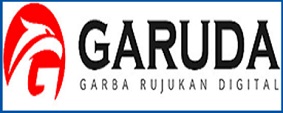PELATIHAN PENGEMBANGAN SOAL GEOMETRI LEVEL HIGHER-ORDER THINKING SKILL (HOTS) BAGI GURU SEKOLAH DASAR DI KOTA KUPANG
Abstract
Kebiasaan berpikir matematis khususnya pada level higher-order thinking skill (HOTS) merupakan sarana penting untuk mengembangkan gagasan secara terbuka dan divergen. Namun hal ini menjadi kendala karena para guru belum memiliki pemahaman yang komprehensif tentang HOTS serta bentuk instrument soal level HOTS. Permasalahan ini harus segera diatasi dengan memberikan pemahaman yang utuh tentang HOTS dan melatih mereka menyusun soal matematika level HOTS khususnya pada konten geometri.dalam bentuk kegiatan Pelatihan Pengembangan Soal Geometri Level HOTS. Sasaran kegiatan ini adalah guru SD Kota Kupang sebanyak 29 orang yang berlangsung di SDI Bertingkat Kelapa Lima 2 Kota Kupang. Metode kegiatan ini yakni ceramah, tanya jawab, diskusi dan presentasi. Setelah diberi pelatihan, guru dibimbing untuk membuat soal-soal level HOTS pada konten geometri yang akan digunakan dalam kegiatan pembelajaran maupun tes di kelas. Hasil yang diperoleh adalah 1) guru memiliki pemahaman yang sama tentang HOTS. Hasil pretest dan posttest menunjukkan adanya perubahan konsepsi tentang HOTS yang didefinisikan sebagai level berpikir analisis, kritis dan kreatif, 2) mampu mengembangkan keterampilan berpikir guru dalam menyusun instrumen soal level HOTS. 3) menumbuhkan komitmen mutu guru terhadap pengembangan kemampuan berpikir matematis siswa.
Kata-kata kunci; geometri, higher-order thinking skill
Mathematical thinking habit, especially at the higher-order thinking skill (HOTS) level, is an important tool for developing ideas openly and diverging. But this is an problem because teachers do not have a comprehensive understanding of HOTS and the HOTS level questions yet. This problem must be solved immediately by providing a complete understanding of HOTS and training them to compile HOTS mathematics problems especially on geometry through the training of developing HOTS Level Geometry questions. The subjects of this training were 29 elementary school teachers which took place at SDI Bertingkat Kelapa Lima 2 Kota Kupang. The method of this activity is discourse, question and answer, discussion and presentation. After being given training, the teacher is guided to make HOTS level questions on geometric content that will be used in learning and test activities in the classroom. The results obtained are 1) the teacher has the same understanding of HOTS. The results of the pretest and posttest showed a change in conceptions about HOTS which was defined as the level of thinking analysis, critical and creative, 2) able to develop teacher thinking skills in preparing HOTS level question instruments. 3) growing the teacher's quality commitment to the development of students' mathematical thinking skills.
Keywords; geometry, higher-order thinking skill
Full Text:
PDFReferences
Kementerian Pendidikan dan Kebudayaan (2013). Diklat Guru dalam Rangka Implementasi Kurikulum 2013: Konsep Pendekatan Scientific. Jakarta: Kemendikbud
Kementerian Pendidikan dan Kebudayaan. (2013). Standar Isi Pendidikan Dasar dan Menengah. Jakarta: Kemendikbud.
Kementerian Pendidikan dan Kebudayaan. (2013). Standar Kompetensi Lulusan Pendidikan Dasar dan Menengah. Jakarta: Kemendikbud.
NCTM (National Council of Teachers of Mathematics). (2000). Principles and standards for school mathematics. Reston, VA: National Council of Teachers of Mathematics.
Paul, R. & Elder, L. (2006). Critical thinking concepts and tools. (Online). Diakses dari The Foundation for critical thinking www.criticalthinking.org.
Pegg, J. (2010). Promoting the acquisition of higher-order skills and understandings in primary and secondary mathematics. University of New England. Research Conference 2010, 35-38.
Resnick, L. (1987). Educating and learning to think. Washington: National Academy Press.
Samo, D. D., Darhim, & Kartasasmita, B. G. (2017). Developing contextual mathematical thinking learning model to enhance higher order thinking ability for middle school students. International Education Studies,10(12),1-13
Senk, S. L., Beckmann, C. E., & Thompson, D. R. (1997). Assessment and grading in high school mathematics classrooms. Journal for Research in Mathematics Education, 28(2), 187-215.
Stein, M. K., & Lane, S. (1996). Instructional tasks and the development of student capacity to think and reason: An analysis of the relationship between teaching and learning in a reform mathematics project. Educational Research and Evaluation, 2 (1), 50-80.
Thomas, A., & Thorne, G. (2014). Higher order thinking. [Online]. Diakses dari http://www.readingrockets.org/article/higher-order-thinking.
Thompson, T. (2000). An analysis of higher-order thinking on algebra I end-of course tests. Department of Mathematics, Science, and Instructional Technology Education College of Education, East Carolina University, Greenville, NC 27858 (252) 328-9358.
Thompson, T. (2008). Mathematics teachers’ interpretation of higher-order thinking in Bloom’s taxonomy. International Electronic Journal of Mathematics Education. 3 (2), 97 – 109.
Weiss, R.,E., (2003). Designing problems to promote higher-order thinking. New Directions For Teaching and Learning Special Issue: Problem-Based Learning in The Information Age, 2003 (95), 25–31.
DOI: https://doi.org/10.31326/jmp-ikp.v2i01.260
Refbacks
- There are currently no refbacks.

This work is licensed under a Creative Commons Attribution-ShareAlike 4.0 International License.






